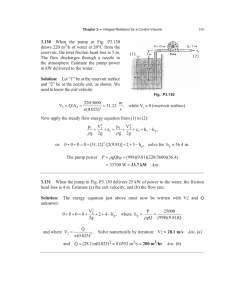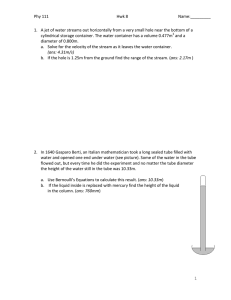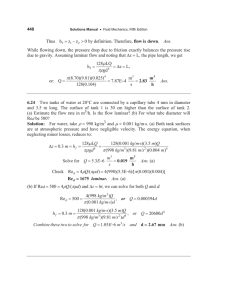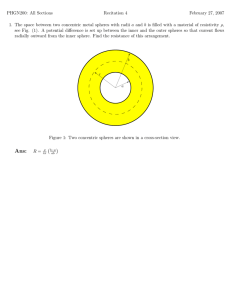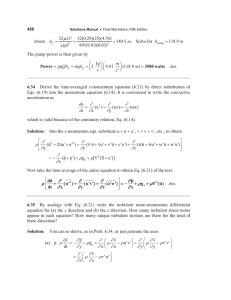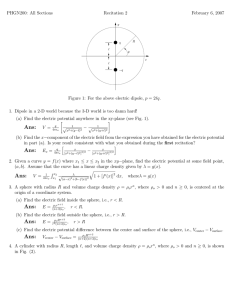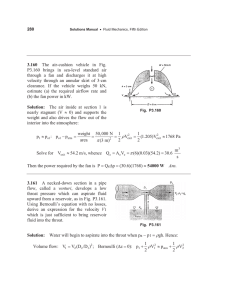D P U S
advertisement
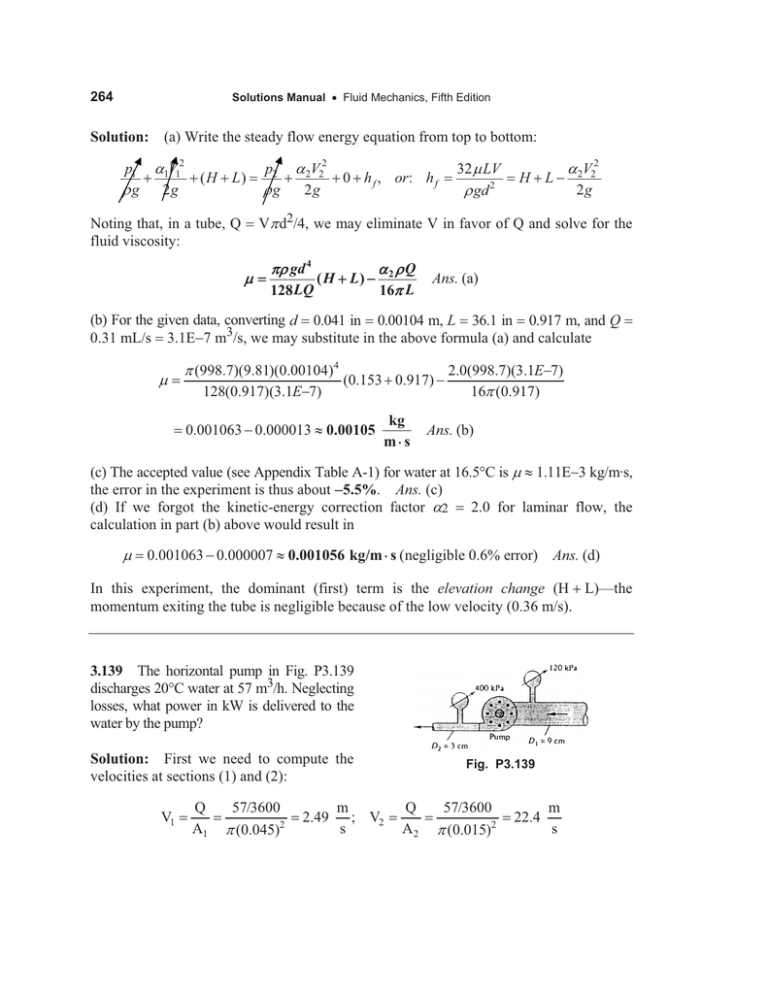
264 Solutions Manual x Fluid Mechanics, Fifth Edition Solution: (a) Write the steady flow energy equation from top to bottom: p1 D1V12 (H L) U g 2g p2 D 2V22 0 h f , or: h f Ug 2g 32 P LV U gd 2 HL D 2V22 2g VS d2/4, we may eliminate V in favor of Q and solve for the Noting that, in a tube, Q fluid viscosity: P SU gd 4 128 LQ ( H L) D2 UQ 16S L Ans. (a) (b) For the given data, converting d 0.041 in 0.00104 m, L 36.1 in 0.917 m, and Q 0.31 mL/s 3.1E7 m3/s, we may substitute in the above formula (a) and calculate P S (998.7)(9.81)(0.00104)4 128(0.917)(3.1E7) (0.153 0.917) 0.001063 0.000013 | 0.00105 kg m s 2.0(998.7)(3.1E7) 16S (0.917) Ans. (b) (c) The accepted value (see Appendix Table A-1) for water at 16.5qC is P | 1.11E3 kg/m·s, the error in the experiment is thus about 5.5%. Ans. (c) 2.0 for laminar flow, the (d) If we forgot the kinetic-energy correction factor D2 calculation in part (b) above would result in P 0.001063 0.000007 | 0.001056 kg/m s (negligible 0.6% error) Ans. (d) In this experiment, the dominant (first) term is the elevation change (HL)—the momentum exiting the tube is negligible because of the low velocity (0.36 m/s). 3.139 The horizontal pump in Fig. P3.139 discharges 20qC water at 57 m3/h. Neglecting losses, what power in kW is delivered to the water by the pump? Solution: First we need to compute the velocities at sections (1) and (2): V1 Q A1 57/3600 S (0.045)2 2.49 m ; V2 s Fig. P3.139 Q A2 57/3600 S (0.015)2 22.4 m s
